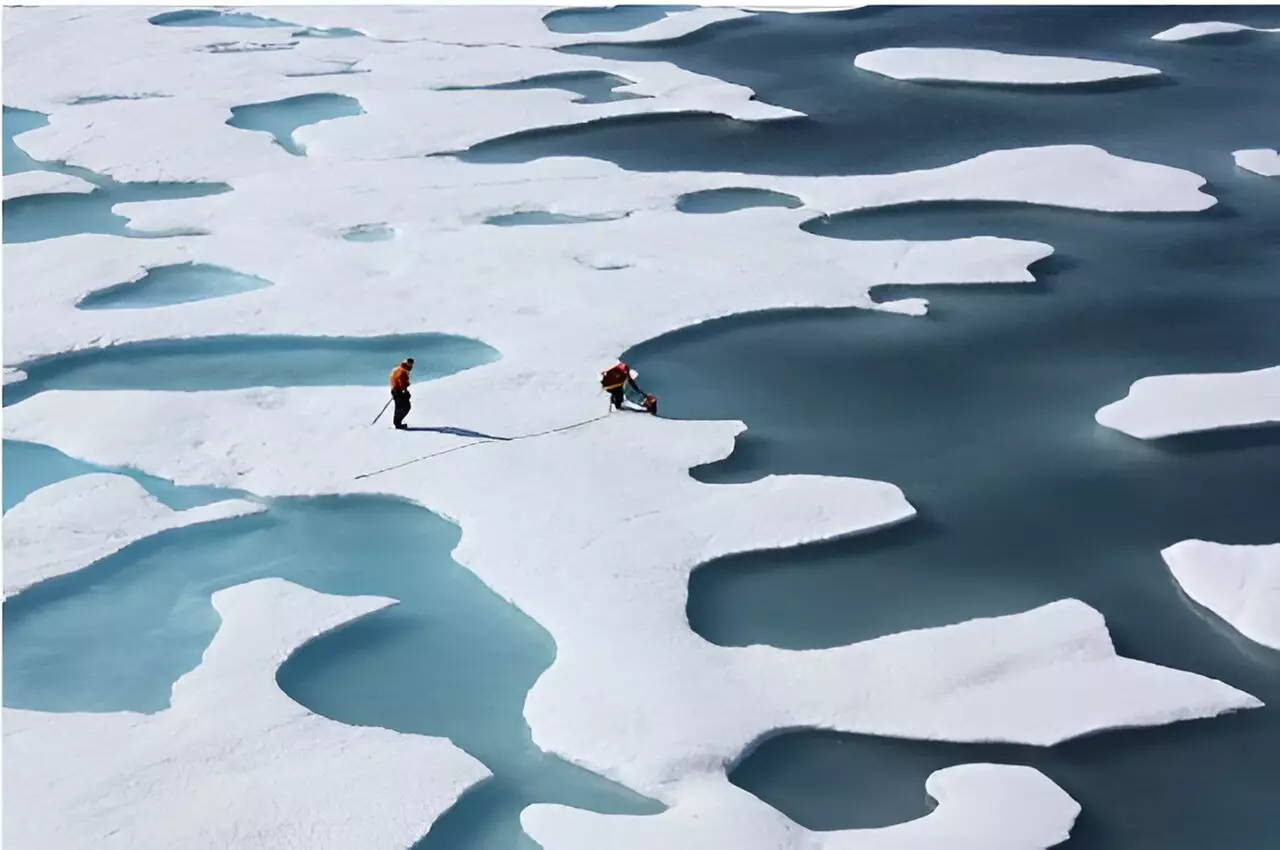The stark reality of climate change is becoming increasingly evident, especially with the alarming research conducted by a team at the University of Michigan. Their findings show that the Arctic, a region that once served as a crucial cooling agent for our planet, has lost nearly a quarter of its ability to reflect solar radiation due to diminishing sea ice. This reduction is not just a local problem; it fundamentally affects global climate systems, compelling us to re-evaluate our understanding of climate feedback mechanisms.
The Disappearing Reflective Shield
Between 1980 and 2023, satellite data has revealed a troubling trend: the cooling power of Arctic sea ice has diminished far more significantly than the mere decline in the physical area of this ice. The researchers observed a decrease that is roughly double the reduction in sea ice extent in both the Arctic and Antarctic. This indicates that the ice that remains is failing not only in quantity but also in its essential function as a reflective shield. As the ice cover becomes thinner and more vulnerable to warmer temperatures, it absorbs more solar radiation, exacerbating warming trends.
This change has broader implications for climate models. Mark Flanner, a researcher involved in the study, notes that estimates of how melting sea ice impacts climate often take decades to develop due to the complexity of climate simulations. However, their substantial new data allows for immediate insights, emphasizing the urgency with which we should address the impacts of these changes.
The Antarctic’s Unexpected Vulnerability
While the Arctic has been the focal point of many climate discussions, the Antarctic’s resilience has recently come under scrutiny. Up until 2016, the South Pole’s sea ice was relatively stable, even showing increases in cooling power. However, this perception was shattered when a massive chunk of ice—larger than Texas—melted from one of Antarctica’s largest ice shelves. Since then, the region has witnessed significant losses in both sea ice extent and its ability to cool the planet.
The research indicates that the years following this critical event have represented the weakest global sea ice cooling effect since the early 1980s. This is an alarming shift that underscores the interconnectedness of polar regions: the deterioration of sea ice in one area can have reverberating effects globally.
Understanding Changes in Reflectivity
The decline in sea ice is not solely about the quantity that is lost; it also involves a change in the properties of the remaining ice. Thinner, wetter ice is increasingly common due to rising temperatures and changing precipitation patterns. Consequently, the reflectivity of this ice—its ability to bounce back solar radiation—has diminished. The new research underscores that this reduced reflectivity could be a significant factor in Antarctic warming, suggesting that the effects of climate change may be underestimated if only considering sea ice loss in terms of area.
A striking statistic arises from this research: the changes to Antarctic sea ice since 2016 could be boosting the climate warming feedback by as much as 40%. If we ignore this, we risk under-calculating the total energy absorption affecting global temperatures.
The Need for Adaptive Climate Strategies
In light of these findings, climate scientists and policymakers must integrate this updated understanding into their adaptation strategies. Aku Riihelä, a co-author of the study, urges that fresh data on the cooling power of sea ice should inform climate change resilience planning. We are at a crossroads where addressing the loss of cryospheric radiative cooling is not merely an environmental concern; it is a pressing global challenge that demands immediate and strategic action.
The implications of these studies are far-reaching, and as satellite data continues to provide fresh insights, it is crucial that both the scientific community and the general public engage with the reality of these changes. Understanding the dynamics of sea ice loss could be key in developing effective responses to mitigate the widespread consequences of climate change, safeguarding ecosystems and communities worldwide.


Leave a Reply